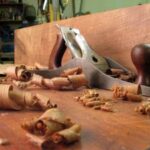I like drying foods, but running up the electric bill is not worth it. There are plans to build solar dryers, but many require woodworking experience, expensive tools or materials.
I have built dryers over the years that have worked well, worked somewhat and some that were worthless. It really is not a hit and miss game. I made mine several years ago, and then saw a similar design on Amazon. Good designs are similar; just look at car manufacturers.
I used leftovers in my craft room, kitchen and workshop to come up with a design that works for me. Currently, my dryer is somewhere in Colorado with a friend that might not return it. I can make another.
A friend of mine had bits and pieces left over from their RV’ing days. I asked for an orphaned vent cover. My friend told me to take it and have fun. These covers are made with UV resistant materials. I coated it with a UV protective sealant, drilled a hole in the middle and set it aside. It measured 14″ x 14.” Now I had my dimensions.
From my kitchen, I scavenged old food dryer panels that I found at various garage sales. I had both round and square, averaging about 12.”
From my sewing room, I gathered old jeans, d-rings, snap hooks, a zipper, mosquito mesh and snaps. I figured I was about ready.
You will need:
- · Mosquito mesh, not necessarily food grade. This will not touch your food.
- · Rope, cording made from denim, nylon webbing 3/8″ wide.
- · D-rings or o-rings. They should be metal.
- · Snap hooks capable of holding a couple of pounds.
- · A 28″ long zipper. These can be found at sewing stores or online. You may have to buy longer and cut one down.
- ·.
- · One 3/8″ washer, nut and cap nut.
- ·. Find these in camping gear.
Step One:
I drilled a hole at the exact center of the vent cover. I threaded the eye bolt through the hole and placed a washer, nut and cap nut on the inside.
I like using heavy-duty snaps. I had a strip of heavy duty snaps that I needed the right project for. Here it was.
I glued one side of the snaps to the inside of the vent cover, just under the flat part of the rim. When snapped on, the mesh would hang straight down.
Step Two:
I decided my trays would not be supported by the mesh. It would hang independently. I made four strips of 3/8″ denim strips by cutting 1 3/8″ strips, folding the edges to the middle and stitching two lines down the strip. This is not as easy as it sounds, but the resulting strip is very strong. I made this strip several yards long. You can also use 3/8″ nylon webbing, which is what I’ll use if my dryer isn’t returned.
Drill four 3/8″ holes in the vent cover. These should be at the corners inside the snaps, not through the snap material.
Step Three:
I cut four strips of my denim “cording,” each 34″ long. I folded the ends over and sewed a D-ring in place.
I threaded the strips through the holes in the vent cover with the D-ring outside the vent. Nothing will be hung from these rings. You could hang a bug repellant from there, but the mesh will keep the bugs off your food.
I measured down the strip and marked four equal points. I attached D-rings to each spot.
Step Four:
To hold the trays, I sewed a 14″ net of denim strips. The net had 3″ wide holes. This allows the air to flow through the trays and still provides a secure place for the trays to rest. Snap rings were attached to the corners of the nets.
Step Five:
I measured around the vent, added four inches to the total and cut my fabric 40″ long and 60″ wide. I folded each side over 1,” then folded it over another inch and pressed down. If you are using plastic mesh, do not touch it with an iron.
I cut a 40″ long strip of denim, 4″ wide. I folded the outer edges to the center and pressed. I placed the folded edges of the mesh into the denim strips and sewed them together with two seams, one at each edge.
I cut a 60″ wide strip of denim, 4″ wide and folded it the same way. I enclosed the top of the mesh and folded the front edge back. This was securely stitched as well.
Step Six:
I attached the snaps to the vent cover. I made sure the strip ends met in the center. I pinned the edges of the denim to the ends, and marked each snap placement. I removed the strip and attached the strip to the denim. I was careful to match the snap placements.
A quick test let me know I was on the money. Good. On to the next step.
Step Seven:
I sewed the top denim together and placed my zipper on the denim strips. It closes by zipping upward.
I attached the snaps and hung the unit by the eye bolt. I made sure the zipper worked well.
I hung the nets in place, then placed trays inside. Everything looked good.
I gently gathered the mesh together under the trays and pinned it in a line. I carefully disassembled the unit and sewed the straight seam ¼” from the edge, folded it up and sewed again. I folded the edges of the straight seam and sewed the corners so It would resemble a little more of a box shape. This step is really not necessary.
Use:
You can hang this outdoors, a warm room, hot garage or wherever you find favorable conditions to dry food. Be sure to follow recipes carefully. Do not attempt to use this in an oven. It will melt. Use no heat at all.
I have a feeling I won’t see my original unit. That’s okay. I’ll make another from more high-tech materials. Someday.
Source: The author of this article has over 40 years of experience in diverse forms of DIY, home improvement and repair, crafting, designing, and building furniture, outdoor projects, RV’ing and more.





